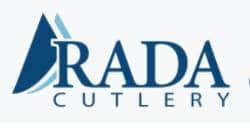Giving is a central component of being part of the church. Not only is giving an essential act of worship, it is an investment in the ministry the God performs through the church. Online or digital giving is important in the health of all churches. The great news is that there are many choices available to churches for giving solutions. However, finding the right fit can be challenging to navigate.
In order to choose the right giving provider, you must consider the giving interface for the donors, the security components, the administrative and reconciliation tools, as well as the way the system connects to your other existing operating systems.
Choosing a reputable provider that will give your donors a safe, smooth, and frictionless experience is extremely important. However, the administrative processes of keeping track of the giving, ensuring the donations are properly recorded and deposited is also essential to the success of your giving system.
From tablets to personal computers to cell phones, there are many technology points your donors may use to access your digital giving. The process should be simple on each device they may choose to utilize. This means that the process of the first gift should be simple, and the next should be just as easy, if not easier.
Evaluating how a donor makes an initial gift is important. But, what about your returning donors? How easy is it going to be for them to access the system? Will they have to use a “forget password” feature every time they want to give? Or worse, will they have to create a new account each time?
Your giving system needs to offer multiple methods for your donors to authenticate, while also maintaining security. The best giving systems will have multiple ways to authenticate or log in, offering solutions like a code being sent to the donor’s phone or email as well as the ability to use a password. The best giving systems also recognize the type of device the donor is utilizing and provide biometric options, as well. This means that once a donor has authenticated their identity, they should be offered an option on their device to save a thumbprint or face ID for the next time they go to give.
Donors need to be empowered to manage their giving information at any time. They should be able to access their information to make changes easily. Make sure that your online giving interface allows them to manage their payment methods, update their recurring giving amounts, and manage their personal information. The best giving systems should also integrate deeply with your church management system (ChMS) or database to allow for donors to easily access their giving history and statements.
The administrative side of your giving system has many factors that should be considered, from your accounting processes to the accurate recording of donor data and the ability to engage your donors regularly. Your accounting team should be able to easily see the donation deposit batches for any date and be able to match up the amount given with the deposit amount in your bank.
Ideally, your system should have special tools that make this simple. The accounting, database and executive teams should all be involved in determining which giving system is right for your church. Additionally, you may want to include your communications, stewardship or engagement teams in your online giving selection process.
A great online giving system is going to have additional important features like deep integrations and great donor engagement. Look for ways to engage your donors with smart tools that allow for tailored communications to suit the current needs of the church. For example, if you have a capital campaign, you want the ability to create different donation pages that communicate the heart of what the donor is actually giving to. The ability to then simultaneously add targeted communications to those donors is a great feature you should be able to expect in your online giving system. However, depending on the church’s preferences and systems, this can also be accomplished through your giving system having a deep integration into your church management system (ChMS) or database.
Most leading ChMSs have the ability to integrate with an external giving provider (even if they don’t publish it on their website). As long as the ChMS has an API available, your giving system should be able to send multiple data points to it directly. Depending on the specific ChMS, this may include recording your giving, matching to donor records or creating new ones and adding pledge information. In the best cases, it can also allow tools to be leveraged via mobile text message or social media chat functions as well. All while writing important information into your ChMS. Some churches also have a ChMS that cannot be integrated due to there not being an API compatibility functionality. If that is the case for your church, then you will want to look for the ability to export your donations from your giving system into your ChMS as part of your service. Minimizing manual entry will save you time and reconciliation headaches due to mis-keyed information.
Choose a giving provider that is actively monitored and managed. The online giving site should always be at maximum availability. This means that even if the church servers are down, the giving system should still be working. Additionally, the giving system should be monitoring activity and being sure that any upstream issues do not affect your recurring donations. For example, if a donor is set to give recurring via a Discover card, but the Discover card network is down, the giving system should be able to monitor that situation, be able to detect when the issue is resolved and still run that donor’s gift the same day.
Monitoring the online giving also means that security should be taken very seriously. Unfortunately, the risks of card testing (a method used by cybercriminals to verify the validity of stolen credit card data) and credential stuffing (a technique where hackers use stolen user names and passwords to gain unauthorized access to accounts) have become prevalent concerns.
Churches that handle their own donation processes, manage their own servers, or use prebuilt ‘stock’ donation webpage forms are particularly vulnerable to these cyberthreats. As a result, it has become imperative for these organizations to deploy robust security measures to protect against fraudulent activities. Your online giving provider should take this seriously and is continually issuing updates that enhance your system’s security.
Finally, the most important aspect to consider with a giving system is how they will service and partner with your ministry specifically. A one-size-fits-all approach is not what most ministries need. Instead, look for systems that have a proven track record of serving the church well. Any system you evaluate should be reviewed carefully. The churches and ministries they serve should be able to give you reports of great service and smooth processes working efficiently with their existing systems. The churches that utilize these systems already should be able to give you a great deal of insight about their experiences.
In church, we all want each other’s ministries to succeed. Therefore, before jumping into a giving partnership with a provider, ask a church that uses their services what they have experienced.
Amy McCollum is with OnlineGiving.org, which helps churches with cutting-edge giving solutions, deep integrations and incredible church engagement tools.







